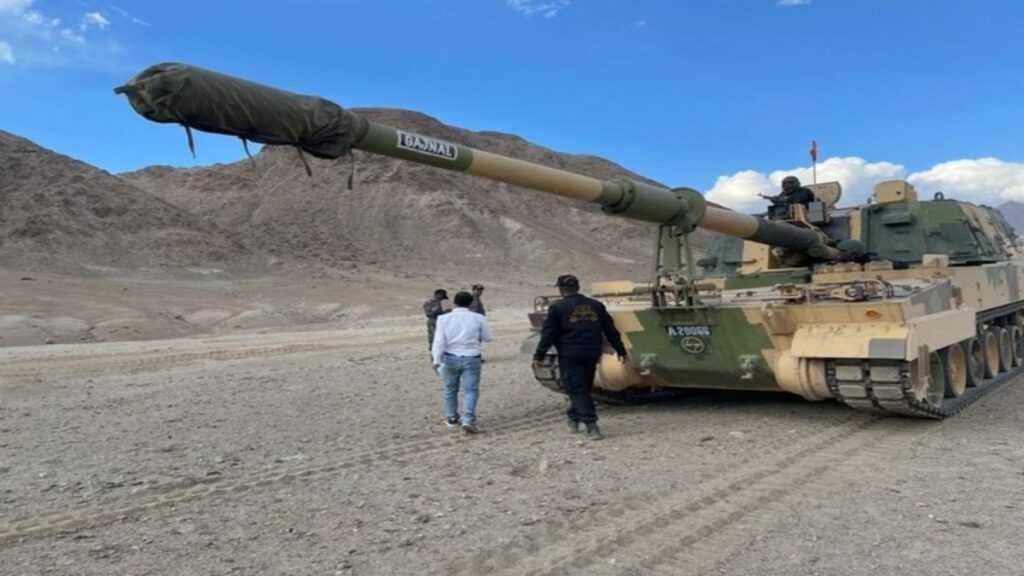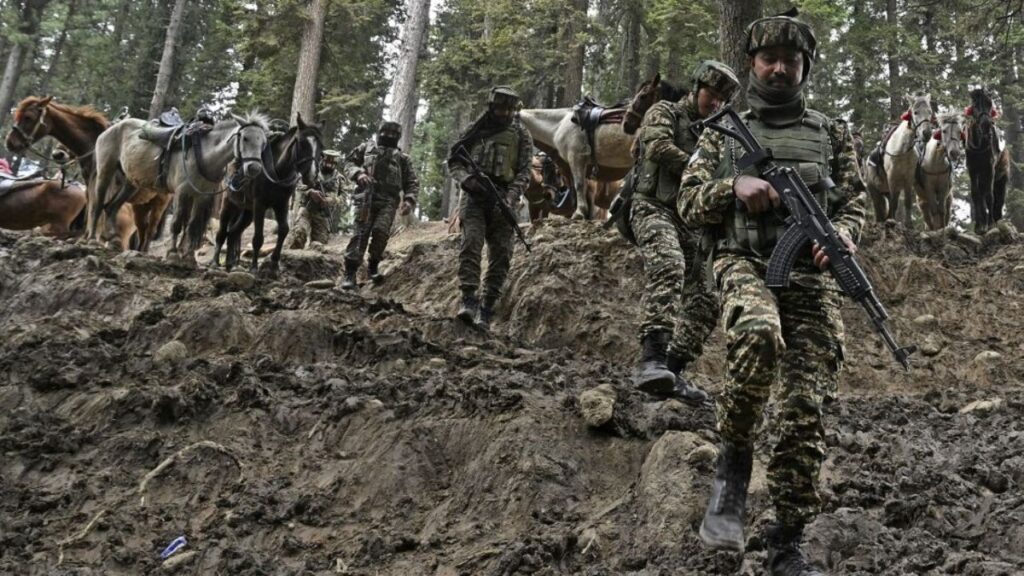
Why the Indian Army’s High Standards are Absolutely Non-Negotiable!
An appalling report criticising the Indian Army’s artillery evaluation process as ‘absurd’ and alleging bias towards imported weapon systems is not just fundamentally inaccurate. Still, it continues to build on a lobby-driven misinformation campaign going back a few years. The flimsy narrative is clear and simple—an attempt to portray rigorous trials—integral to defence procurement globally—as bureaucratic excesses to obstruct indigenous development. In truth, these stringent evaluation practices form the backbone of India’s efforts to build an artillery capability suited to its unique strategic environment.
India’s diverse operational landscape presents unprecedented challenges. Troops along the Line of Actual Control (LAC) with China operate at altitudes well above 15,000 feet, battling extreme cold, reduced oxygen levels, and mountainous terrain severely restricting mobility and operational flexibility. Simultaneously, in the western theatre along the Indo-Pak border, artillery units must endure temperatures surpassing 50°C, with dust, sand, and searing heat degrading mechanical and electronic components. The Indian Army’s comprehensive artillery trials, therefore, are neither arbitrary nor excessive—they are operational imperatives designed to guarantee safety, reliability, and sustained firepower under any imaginable battlefield scenario.
For instance, the indigenous Advanced Towed Artillery Gun System (ATAGS)—jointly developed by the Defence Research and Development Organisation (DRDO), Bharat Forge, and Tata Advanced Systems Limited (TASL)—recently underwent extensive trials under extreme conditions. The system was meticulously evaluated in high-altitude winter trials in Sikkim and intense summer firing tests in Rajasthan’s Pokhran desert. These tests are precisely the kind of comprehensive evaluations any responsible military would require before inducting a sophisticated weapons platform into its ranks.
Also Read: Pakistan’s Military in Crisis: Internal Discord and Draconian Rule
Criticism describing such trials as ‘absurd’ or deliberately protracted reveals either a fundamental misunderstanding of defence preparedness or a deliberate attempt to undermine confidence in indigenous manufacturing. Rigorous testing regimes have enabled ATAGS to surpass global artillery standards, achieving record-setting ranges in excess of 48 kilometres. Such results unequivocally prove the Army’s rigorous approach to be necessary, justified, and effective.
Moreover, allegations that the Army prefers imported artillery systems such as Israel’s ATHOS demonstrate a profound disregard for well-documented procurement processes and decisions. In fact, the procurement of towed artillery systems from foreign sources, including ATHOS, was explicitly foreclosed after the Defence Ministry’s introduction of the negative import list in 2019—a policy initiative championed by the military leadership itself. Significantly, the ATHOS procurement, despite reaching the Contract Negotiation stage, was explicitly proposed for closure in 2022 in favour of domestically produced systems. To suggest otherwise is disingenuous at best.
Moreover, the Towed Gun System (TGS) procurement clearly exemplifies this commitment, falling entirely under the ‘Buy Indian–IDDM’ category, mandating at least 70% indigenous content. Following the retraction of the global RFP in February 2024, the TGS project has proceeded purely as an indigenous design and development initiative, led by prominent Indian defence manufacturers—Bharat Forge (Kalyani Group), Tata Advanced Systems Ltd (TASL), and Advanced Weapons and Equipment India Ltd (AWEIL). Claims alleging continued global procurement for TGS after 2017 are therefore unequivocally false and misleading.
Further evidence disproving this unfounded bias against indigenous systems is the Army’s clear stipulations in the 2022 Request for Information (RFI) for a new generation towed artillery gun system. Contrary to misrepresentation, the Army’s RFI explicitly required higher indigenous content and mandated domestic development of critical technologies, stressing the commitment towards the ‘Make in India’ initiative. Additionally, the specified operational weight of 15 tonnes in the RFI was intentionally set lighter than the ATHOS (which weighed approximately 16.5 tonnes), clearly demonstrating that accusations of preferential alignment with foreign manufacturers lack factual accuracy.
Also Read: Trump’s annexation plans for Greenland and Canada run into resistance
Operational considerations necessitate such specifications. The Advanced Towed Artillery Gun System (ATAGS), though highly effective, weighs approximately 19.5 tons, posing considerable mobility challenges in mountainous terrains. Recognising this limitation, the lighter TGS—under 15 tons, a substantial 4.5-ton reduction—is being developed specifically for agile deployment in challenging mountainous environments. This differentiation underscores a pragmatic and operationally driven procurement strategy rather than any purported bias.
The Indian Army, in reality, has proactively promoted indigenous artillery capability-building for nearly two decades. Even during periods when India’s domestic industrial base was nascent and underdeveloped, the Army consistently provided essential support to industry partners. Initiatives included establishing dedicated Weapon Development Teams, guaranteeing procurement numbers to encourage private investment, providing unrestricted access to firing ranges, extending administrative and technical support, allowing multiple retrials, and closely monitoring progress through Joint Project Monitoring Committees. The resulting indigenous artillery inventory—featuring sophisticated platforms such as Dhanush, K9 Vajra, Sharang, and now ATAGS—stands as testimony to the effectiveness of this strategic vision and sustained collaborative effort.
Additionally, assertions implying discrepancies in mobility trials between ATAGS and global artillery systems are misleading. Both ATAGS and previously evaluated foreign systems have undergone exhaustive mobility trials across Sikkim’s challenging terrain. The ATAGS’ multiple trials were due solely to compliance refinement, not biased testing.
On March 26, 2025, the Ministry of Defence officially signed contracts with Bharat Forge Limited and Tata Advanced Systems Ltd for procurement of ATAGS along with High Mobility Vehicle 6×6 Gun Towing Vehicles at approximately Rs 6,900 crore. This landmark procurement, the first major acquisition of towed artillery guns from India’s private sector, further highlights India’s commitment to a structured and unbiased indigenous artillery procurement strategy.
The procurement strategy itself clearly reflects the Army’s structured and unbiased approach. Initially, ATAGS will equip 15 artillery regiments, while the lighter TGS will serve 20 regiments. Further procurement decisions for both systems will be made only after comprehensive operational evaluation, ensuring the most effective platform is inducted based purely on demonstrated performance.
It is pertinent here to note that globally renowned militaries follow similar stringent standards. The US Army, for example, routinely subjects new artillery platforms to exhaustive trials extending over multiple years, thoroughly verifying performance under diverse conditions to ensure absolute reliability before frontline deployment. India’s approach is, therefore, neither unusual nor excessive but instead represents a responsible, professional methodology aligned with global best practices.
Now, as India continues its journey towards defence self-reliance, the Indian Army’s standards must remain uncompromising. Effective artillery in modern warfare demands robust systems that consistently deliver precision, extended range, rapid redeployment capabilities, and reliability across diverse operational environments. Global conflicts from Ukraine to Israel have shown the world the decisive role artillery performance plays in contemporary combat scenarios. The army’s rigorous testing protocols thus ensure its artillery meets these exacting global standards—making such meticulous evaluations not merely desirable but strategically essential.
(Disclaimer: The views of the writer do not represent the views of WION or ZMCL. Nor does WION or ZMCL endorse the views of the writer.)





Responses